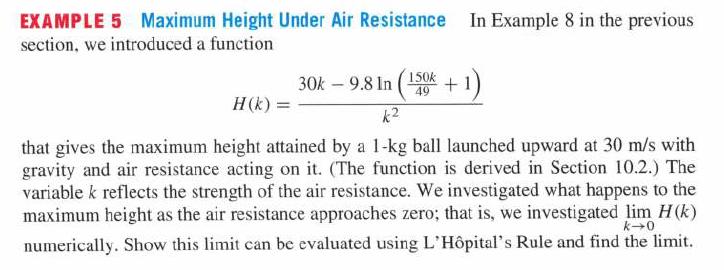A ball is launched straight up in the air and is acted on by air resistance and
Question:
A ball is launched straight up in the air and is acted on by air resistance and gravity as in Example 5. The function H gives the maximum height that the projectile attains as a function of the air resistance parameter k. In each case, determine the maximum height as we let the air resistance term go to zero; that is, determine ![]()


A ball with a mass of 1 kg is launched upward with an initial velocity of 60 m/s, and

(Compare with Exercise 23 in the previous section and Exercise 29 in Section 3.4.)
Data From Exercise 23 in previous section
A ball is launched straight up in the air and is acted on by air resistance and gravity as in Example 8. The function H gives the maximum height that the ball attains as a function of the air-resistance parameter k. In each case, estimate the maximum height without air resistance by investigating ![]() numerically.
numerically.
A ball with a mass of 1 kg is launched upward with an initial velocity of 60 m/s, and

Data From Exercise 29 in the 3.4
A projectile is launched in the air from the ground with an initial velocity v0 = 60 m/s. What is the maximum height that the projectile reaches?
Step by Step Answer:






